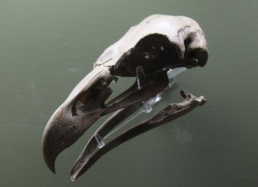2: Landing in New Zealand
After a numbingly long flight, we arrived in Christchurch, New Zealand, tired and disheveled but elated to be out of an aircraft seat. It’s summer in the Southern Hemisphere, and we landed on a warm, sunny day to enjoy a climatic treat before heading toward the ice. As we arrived at our hotel, our shuttle had to skirt a civic Christmas parade featuring everything from dragon dancers to a McDonald’s float. Given the weather, it felt much more like the 4th of July to us.
Christchurch served as a meeting point for a majority of our team. In addition to Bill and myself, Phil and Eva arrived on the 5th, with Roger Smith and our mountaineer, Peter Braddock, arriving a day later. Because of weather delays, Nate and Josh were still in town, and we overlapped with them for a day as well.
Christchurch is a quaint and pleasant city with a distinctly English feel to it. The University of Canterbury is built in imitation Gothic style, while Tudor- and Georgian-style houses and punters on the River Avon add to the Oxfordian feel of the place. Unfortunately, I didn't have much time to enjoy the surroundings, as there were some lingering duties from the Museum that needed attention, and I spent a good part of the first day churning through those.
While working at my laptop in my room at the 11th floor of the Crown Plaza Hotel, I felt the floor move and looked up and saw my glass of water with ripples running across the surface. This was a small tremor, one of many aftershocks, both large and small, that have affected Christchurch since it was struck by a major earthquake in September. Some of the buildings here have scaffolding, but overall, the signs of damage are mostly gone (see Photo #1 below.)
The day after arrival, we were scheduled to visit the National Science Foundation’s Clothing Distribution Center (CDC), where we were issued our Extreme Cold Weather Gear. We each received two large orange duffels with clothing. The big red parkas stuffed with goose down inspired confidence that we could deal with the cold. The giant, white rubber ‘bunny’ boots are somewhat more comical, although a cross section of one on display at the CDC reveals layers of insulating felt. We'd all sent the National Science Foundation our clothing measurements beforehand, but it's important to make sure everything fits. Since we're going to spend our field time in a remote camp, we all also requested additional hats, gloves, and socks.
After getting our equipment and instructions at CDC, Bill and I visited the Canterbury Museum, which houses an exhibit on the history of Antarctic exploration. It was sobering to compare the reindeer-hide, grass-stuffed shoes from some of Ernest Shackleton’s expeditions in the early 1900s with the modern equipment we'd been issued. With no means to reach the outside world and relying entirely upon their own strength and that of their dogs or ponies, those pioneers of Antarctic exploration were true heroes. Some, such as Robert F. Scott and his South Pole party, paid with their lives.
Other museum highlights included well-preserved skeletons and skulls of the giant birds that dominated the prehistoric faunas of New Zealand, such as moas and giant eagles (see Photo #2 below.) New Zealand has been an island for about 80 million years, since it rifted from the rest of the southern hemisphere continents, and was never colonized by mammals. In their absence, birds evolved to fill the roles of dominant herbivores and predators. Many became flightless as they evolved into giant sizes, with some moas weighing hundreds of pounds. The museum also exhibited fantastic carvings and artifacts made by New Zealand’s native Polynesian inhabitants, the Maori, who hunted the moas to extinction in recent prehistory. My favorite was a cloak made of kiwi feathers.
I regret I didn’t get to see enough of New Zealand, but our big adventure lies ahead, and tomorrow we head for the ice.
More soon,
Pete




